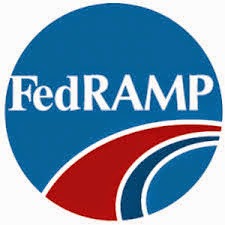Twitter Feed
VMware lays out roadmap to the clouds.
Earlier this year, Diane Greene, VMware President and Co-Founder, described cloud computing as the final evolutionary step for virtualization. Reza Malekzadeh, Senior Director of Products and Marketing reinforced that view…
Mario Dal Canto at Virtualization Conference & Expo 2008 East
According to Mario Dal Canto, “Virtual Cloud Computing represents the next wave of virtualization and offers significant market opportunities by providing a new, simpler, and much more pervasive platform for…
Microsoft cloud fits and starts.
Microsoft’s dance with cloud comuting is very puzzling. Point 1: The June 5th Wall Street Journal article discusses the friction between Steve Ballmer and Bill Gagtes over NetDocs, described by…
Salesforce.com & Google
A short promotional video on Salesforce and the Google cloud. Follow me at https://Twitter.com/Kevin_Jackson
Gamers now have their own cloud.
Valve, a Bellevue, Washington based entertainment software and technology company, recently announced that they will use the cloud computing paradigm as their next major update. Called “Steam Cloud” the service…
Is IBM serious about cloud computing?
Last week in Eye on the Enterprise, Joe McKendrick, highlighted IBM VP Steve Mills’ apparently less than enthusiastic statement regarding cloud computing. In an April 30th interview with CNET’s Dan…
VMware and Cloud Computing
VMware President and Chief Executive Officer Diane Greene,in her keynote address at the JP Morgan Technology Conference in Boston, described cloud computing as the final evolutionary step for virtualization. In…
DISA Cloud Computing Plans
During last month’s Defense Information Systems Agency (DISA) Partnership Conference, cloud computing debuted as a “top priority” for senior leadership. Speakers described a future state when users would access computing…
The Cloud Computing Portal
The Cloud Computing Portal is a community edited database that makes the cloud vendor selection process easier, by helping you find a cloud provider who supports the environment you need.…
HP in the Cloud
In “HP weds cloud…” , Hewlett-Packard has apparently outlined their approach to cloud computing. They are merging their high-performance computing unit with the Web 2.0 and cloud computing infrastructure businesses.…
 One of the questions I’ve been asked from the beginning of the Federal Cloud First initiative, is, “If my data is in The answer is not as clear-cut as the question. In theory, most cloud services offer extremely resilient platforms and a modicum of disaster recovery is built in. In fact, those cloud service provider (CSP) systems that have received an ATO through the FedRAMP program do have fairly sophisticated contingency plans in place, with Recovery Time Objectives (RTO) and Recovery Point Objectives (RPO) clearly articulated- and plenty of alternate processing sites, policies, and procedures in place in the event of a contingency. So, it’s in there right?
One of the questions I’ve been asked from the beginning of the Federal Cloud First initiative, is, “If my data is in The answer is not as clear-cut as the question. In theory, most cloud services offer extremely resilient platforms and a modicum of disaster recovery is built in. In fact, those cloud service provider (CSP) systems that have received an ATO through the FedRAMP program do have fairly sophisticated contingency plans in place, with Recovery Time Objectives (RTO) and Recovery Point Objectives (RPO) clearly articulated- and plenty of alternate processing sites, policies, and procedures in place in the event of a contingency. So, it’s in there right?
Not so fast- it depends on what services you are acquiring and how you are deploying and managing them. The baseline of this discussion is however rooted in availability and uptime.
the cloud, isn’t my disaster recovery built in? Isn’t that the benefit of being in the cloud?”
- Amazon – 28.23 hours
- Rackspace – 97.98 hours
- Verizon – 136 hours
(This post was written as part of the Dell Insight Partners program, which provides news and analysis about the evolving world of tech. To learn more about tech news and analysis visit TechPageOne. Dell sponsored this article, but the opinions are our own and don’t necessarily represent Dell’s positions or strategies.)
( Thank you. If you enjoyed this article, get free updates by email or RSS – © Copyright Kevin L. Jackson 2012)
Cloud Computing
- CPUcoin Expands CPU/GPU Power Sharing with Cudo Ventures Enterprise Network Partnership
- CPUcoin Expands CPU/GPU Power Sharing with Cudo Ventures Enterprise Network Partnership
- Route1 Announces Q2 2019 Financial Results
- CPUcoin Expands CPU/GPU Power Sharing with Cudo Ventures Enterprise Network Partnership
- ChannelAdvisor to Present at the D.A. Davidson 18th Annual Technology Conference
Cybersecurity
- Route1 Announces Q2 2019 Financial Results
- FIRST US BANCSHARES, INC. DECLARES CASH DIVIDEND
- Business Continuity Management Planning Solution Market is Expected to Grow ~ US$ 1.6 Bn by the end of 2029 - PMR
- Atos delivers Quantum-Learning-as-a-Service to Xofia to enable artificial intelligence solutions
- New Ares IoT Botnet discovered on Android OS based Set-Top Boxes

